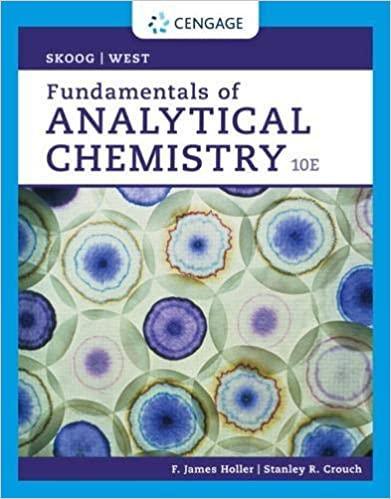Question
Question One: A. A 25.00 ml pipette sample of 2.50 mg/ml ascorbic acid solution was titrated with an iodine solution, requiring 31.75 ml of the
Question One:
A. A 25.00 ml pipette sample of 2.50 mg/ml ascorbic acid solution was titrated with an iodine solution, requiring 31.75 ml of the iodine solution to reach the end-point. This same iodine solution was used to titrate 25.00 ml of fruit juice, requiring 29.34 ml to reach the end-point. What is the concentration of ascorbic acid in the fruit juice sample in mg/ml?
B. A food sample is known to contain malic acid (MA), citric acid (CA), and ascorbic acid (AA). Design, and briefly describe, an experiment using the titrations described in this lab exercise (or other methods) to determine the non-AA acidity of the food sample; i.e. the acidity arising from MA and CA alone.
Step by Step Solution
There are 3 Steps involved in it
Step: 1

Get Instant Access to Expert-Tailored Solutions
See step-by-step solutions with expert insights and AI powered tools for academic success
Step: 2

Step: 3

Ace Your Homework with AI
Get the answers you need in no time with our AI-driven, step-by-step assistance
Get Started


